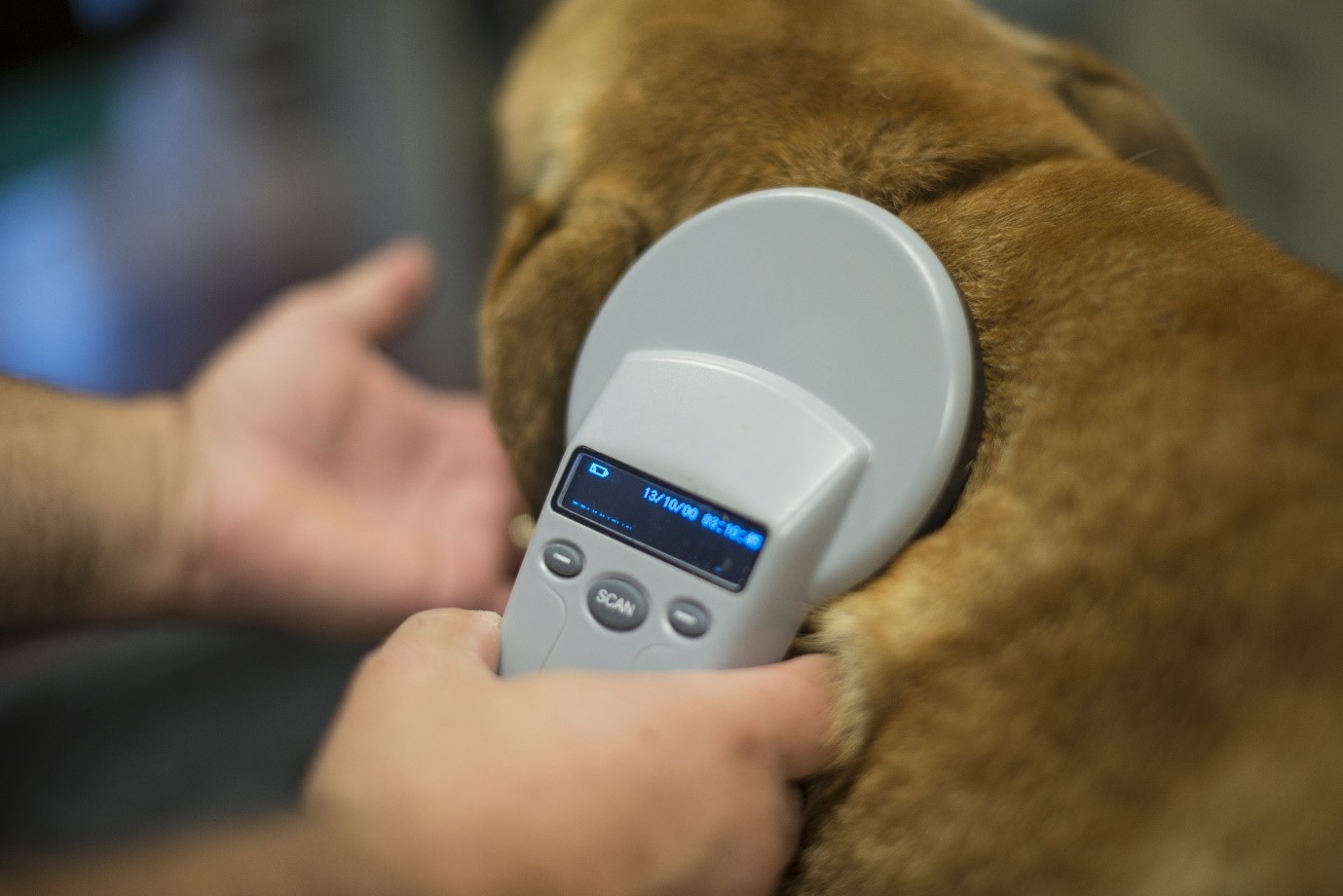
Microchipping your pet- National Microchipping month June 2023
30th May, 2023
National Microchip Month in June aims to raise awareness of the importance of keeping your pet's details up to date so should the worst happen, your pet can be reunited with you. It is also there to help show greater awareness of how important microchipping your pet can be.
History of the microchip
Technology underwent a rather large transformation at one point in time, inspiring major inventions — one of them being the microchip invented in 1959. The first versions of this invention were only ever used for human purposes, finding their way into electrical circuit boards, computers, and so on.
As pet ownership increased, the research into pet care grew too. People soon realized that the microtechnology they were using for human inventions could theoretically be used in animals too. Pet chipping began as a way to track animals and as a precautionary measure to identify aggressive dogs.
Microchipping was first introduced in the UK in 1989 and is internationally recognised as a permanent method of identification and traceability of pets.
Following the introduction of microchips in the UK, in the early 1990s a group of veterinary bodies, microchip suppliers and animal charities joined together, to regulate the microchip industry; it was known then as the Microchip Advisory Group (before changing to the Microchip Trade Association (MTA)) and chaired by the BSAVA.
Microchipping became compulsory in England, Scotland and Wales on 6th April 2016. Following the introduction of compulsory microchipping for dogs, veterinary practices and databases were inundated with dog owners looking to chip their dog and ensure their contact details were up to date, proving that despite the education campaigns from welfare organisations and databases alike, a high percentage of the 8.5 million dog owners in the UK had left it up until the law came into force to ensure they were compliant.
The owner of an unchipped dog will be given 21 days to comply and failure to do so may result in a fine of up to £500.
What is a microchip?
A pet microchip is a tiny computer chip that’s about the size of a grain of rice. It contains a unique code that matches up to your pets’ details. Microchipping a dog is a quick and simple procedure, the chip is inserted under a dog’s skin, usually around the scruff of the neck, using a needle. It takes seconds.
Dogs can be checked for a microchip using a handheld electronic device called a scanner, wh en this is waved over the dogs neck, the scanner will recognise the unique information held inside the chip.
Why should I get my dog microchipped?
A microchip is a permanent form of identification. If the details are kept up to date, you can always be contacted if your dog goes missing.
When dogs are found straying, they are collected by the local authority dog warden and kept for seven days. If your microchipped dog goes missing and is taken in by the dog warden, your contact details will be easily found and you can come and collect them straight away, even if their collar and ID tag have fallen off.
But without identification telling the dog warden who your dog belongs to, they cannot let you know your beloved pet has been found. After seven days your dog can be passed to a rehoming charity, such as Blue Cross, to be found a loving new home, or they can be euthanised by the local authority.
Where can I get my dog microchipped and how much will it cost?
It costs about £10 to £15 to get your dog microchipped by a vet or vet nurse, and some dog groomers, dog walkers and pet sitters offer this service too. Make sure the person who microchips your dog is qualified to do so as your dog may suffer if the person is not properly trained.
How old does my dog have to be to be microchipped?
Dogs can be microchipped at any age, but it’s more comfortable for puppies if they’re at least seven or eight weeks old before being chipped.
How do I check if my dogs microchip details are up to date?
When you get your dog microchipped you should receive confirmation from the database your dog’s details are registered with. To check if your dog’s details are correct, simply contact the database that holds the details on your dog’s chip. If you don’t have a certificate of registration or other type of confirmation from the microchip database, you can check which database the chip is registered to at www.check-a-chip.co.uk
How do I change my dogs microchip details?
If you move and have a change of address or name, don’t forget to update your dog’s details too.
To do this, get in touch with the database that holds your dog’s details. Depending on which database your dog is registered with, you might be able to do this over the phone or online, or you may have to do so by post. The cost of getting your dog microchipped covers only the implantation of the chip itself; it doesn’t cover the cost of changing your pet’s details in the future.
Pet microchip databases charge an admin fee of between £6 and £20 to change and update dogs’ details. Some will charge you each time you want to change your details, and others charge an upfront fee that covers all changes for the whole of your dog’s life. Check with your database to find out how they are administered.
If you don’t keep your details up to date, the chances of you being reunited with your pet if they go missing significantly decrease. Don’t run the risk of never seeing your dog again.
Source: Bluecross